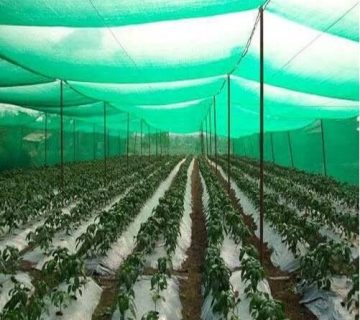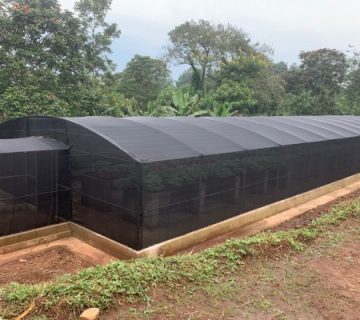Do you want to know How Much Does Shade Cloth Reduce Temperature? You can regulate temperature with the help of shading. Reducing temperatures can improve plant quality and worker output by reducing heat stress and maximizing the usefulness of available water. Learn the steps here.
Like humans, plants do best when conditions are good. Now let’s see how much a shade cloth can help us reduce the temperature.
Lower the Temperature by Shade net
Other factors, such as humidity and airflow, are crucial in determining how big of a temperature drop you may expect from shade cloth.
So, How Much Does Shade Cloth Reduce Temperature? High tunnel or greenhouse temperatures can be reduced at least 10 degrees Fahrenheit (5.5 degrees Celsius) and more than 15 degrees Fahrenheit (8.3 degrees Celsius) with the use of shade cloth with a shade factor of 40 to 50 percent. That implies the temperature inside could be as low as 80 degrees Fahrenheit (26.6 degrees Celsius) when it’s 95 degrees Fahrenheit (35 degrees Celsius) outdoors.
Suppose you lay it over your plants (without touching them) in a garden bed. In that case, depending on the relative humidity and wind speed, you may get the same or comparable results. Wetting shade cloth makes it even more effective at reducing heat, according to research from Utah State University.
Density and Percentage | How Much Does Shade Cloth Reduce Temperature?
How tightly woven a shade fabric is can be gauged by measuring its density. Inversely, the higher the density, the less light will be transmitted.
The amount of blocked light is indicated by the shade cloth’s percentage. A shade fabric with a 30% reduction in light transmission would allow 70% of the sun’s rays through.
The density of the shade fabric determines the degree to which it blocks the sun. Shade cloth percentages range from 5% (most sunlight is blocked) to 95% (almost no light is filtered) (most sunlight is blocked). The Utah State University has recommended that a shade cloth with a percentage of coverage between 20% and 40% is best for growing fruits and vegetables.
Research by Dan Willits on How Much Does Shade Cloth Reduce Temperature
Agricultural engineer Dan Willits of North Carolina State University looked into the problem of growers not having enough time or money to adequately cool greenhouse crops during the summer in the early 2000s and answered How Much Does Shade Cloth Reduce Temperature? Fan ventilation and evaporative cooling were the first two cooling stages for certain cultivators. Some farmers even went so far as to put a black shade cloth over the greenhouse as a means of further cooling the facility. Willits discovered that utilizing black shade cloth at low levels of shadow (30 percent) provided little to no reduction in greenhouse temperature. More shade did not effectively lower temperatures. Light levels reduces following the shading value; however, the heat load did not change significantly. As a result, temperatures rise, and visibility decreases.
Willits hypothesized that the black shade cloth would get hotter as it absorbed more sunlight. A shade cloth loses radiation-blocking properties and acts more like a radiator when heated.
Type of Shade Cloth Can Affect the Answer of How Much Does Shade Cloth Reduce Temperature
Willits looked into the effectiveness of reflected, exteriorly mounted shade cloth in future research. Farmers can reduce shade temperatures and radiation of the net entering the greenhouse if they use less porous and more reflecting materials. Sixty-percent black fabric and more were all tested. With 60% shade, the greenhouse heat gain was reduced by about 30%.
Bottom Line
In this blog post, we answered How Much Does Shade Cloth Reduce Temperature, the effect of the type of shade cloth, Dan Willits’s research on this matter, and more. If you have any questions regarding this topic, don’t shy away and ask us.




No comment